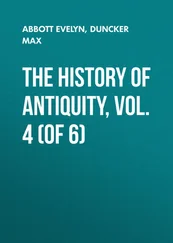We may pass over such rudimentary advances in the direction of civilization as are implied in the use of articulate language, the application of fire to the uses of man, and the systematic making of dwellings of one sort or another, since all of these are stages of progress that were reached very early in the prehistoric period. What more directly concerns us is to note that a really high stage of mechanical development had been reached before the dawnings of Egyptian history proper. All manner of household utensils were employed; the potter's wheel aided in the construction of a great variety of earthen vessels; weaving had become a fine art, and weapons of bronze, including axes, spears, knives, and arrow-heads, were in constant use. Animals had long been domesticated, in particular the dog, the cat, and the ox; the horse was introduced later from the East. The practical arts of agriculture were practised almost as they are at the present day in Egypt, there being, of course, the same dependence then as now upon the inundations of the Nile.
As to government, the Egyptian of the first dynasty regarded his king as a demi-god to be actually deified after his death, and this point of view was not changed throughout the stages of later Egyptian history. In point of art, marvellous advances upon the skill of the prehistoric man had been made, probably in part under Asiatic influences, and that unique style of stilted yet expressive drawing had come into vogue, which was to be remembered in after times as typically Egyptian. More important than all else, our Egyptian of the earliest historical period was in possession of the art of writing. He had begun to make those specific records which were impossible to the man of the Stone Age, and thus he had entered fully upon the way of historical progress which, as already pointed out, has its very foundation in written records. From now on the deeds of individual kings could find specific record. It began to be possible to fix the chronology of remote events with some accuracy; and with this same fixing of chronologies came the advent of true history. The period which precedes what is usually spoken of as the first dynasty in Egypt is one into which the present-day searcher is still able to see but darkly. The evidence seems to suggest than an invasion of relatively cultured people from the East overthrew, and in time supplanted, the Neolithic civilization of the Nile Valley. It is impossible to date this invasion accurately, but it cannot well have been later than the year 5000 B.C., and it may have been a great many centuries earlier than this. Be the exact dates what they may, we find the Egyptian of the fifth millennium B.C. in full possession of a highly organized civilization.
All subsequent ages have marvelled at the pyramids, some of which date from about the year 4000 B.C., though we may note in passing that these dates must not be taken too literally. The chronology of ancient Egypt cannot as yet be fixed with exact accuracy, but the disagreements between the various students of the subject need give us little concern. For our present purpose it does not in the least matter whether the pyramids were built three thousand or four thousand years before the beginning of our era. It suffices that they date back to a period long antecedent to the beginnings of civilization in Western Europe. They prove that the Egyptian of that early day had attained a knowledge of practical mechanics which, even from the twentieth-century point of view, is not to be spoken of lightly. It has sometimes been suggested that these mighty pyramids, built as they are of great blocks of stone, speak for an almost miraculous knowledge on the part of their builders; but a saner view of the conditions gives no warrant for this thought. Diodoras, the Sicilian, in his famous World's History, written about the beginning of our era, explains the building of the pyramids by suggesting that great quantities of earth were piled against the side of the rising structure to form an inclined plane up which the blocks of stone were dragged. He gives us certain figures, based, doubtless, on reports made to him by Egyptian priests, who in turn drew upon the traditions of their country, perhaps even upon written records no longer preserved. He says that one hundred and twenty thousand men were employed in the construction of the largest pyramid, and that, notwithstanding the size of this host of workers, the task occupied twenty years. We must not place too much dependence upon such figures as these, for the ancient historians are notoriously given to exaggeration in recording numbers; yet we need not doubt that the report given by Diodorus is substantially accurate in its main outlines as to the method through which the pyramids were constructed. A host of men putting their added weight and strength to the task, with the aid of ropes, pulleys, rollers, and levers, and utilizing the principle of the inclined plane, could undoubtedly move and elevate and place in position the largest blocks that enter into the pyramids or—what seems even more wonderful—the most gigantic obelisks, without the aid of any other kind of mechanism or of any more occult power. The same hands could, as Diodorus suggests, remove all trace of the debris of construction and leave the pyramids and obelisks standing in weird isolation, as if sprung into being through a miracle.
ASTRONOMICAL SCIENCE
It has been necessary to bear in mind these phases of practical civilization because much that we know of the purely scientific attainments of the Egyptians is based upon modern observation of their pyramids and temples. It was early observed, for example, that the pyramids are obviously oriented as regards the direction in which they face, in strict accordance with some astronomical principle. Early in the nineteenth century the Frenchman Biot made interesting studies in regard to this subject, and a hundred years later, in our own time, Sir Joseph Norman Lockyer, following up the work of various intermediary observers, has given the subject much attention, making it the central theme of his work on The Dawn of Astronomy.(1) Lockyer's researches make it clear that in the main the temples of Egypt were oriented with reference to the point at which the sun rises on the day of the summer solstice. The time of the solstice had peculiar interest for the Egyptians, because it corresponded rather closely with the time of the rising of the Nile. The floods of that river appear with very great regularity; the on-rushing tide reaches the region of Heliopolis and Memphis almost precisely on the day of the summer solstice. The time varies at different stages of the river's course, but as the civilization of the early dynasties centred at Memphis, observations made at this place had widest vogue.
Considering the all-essential character of the Nile floods-without which civilization would be impossible in Egypt—it is not strange that the time of their appearance should be taken as marking the beginning of a new year. The fact that their coming coincides with the solstice makes such a division of the calendar perfectly natural. In point of fact, from the earliest periods of which records have come down to us, the new year of the Egyptians dates from the summer solstice. It is certain that from the earliest historical periods the Egyptians were aware of the approximate length of the year. It would be strange were it otherwise, considering the ease with which a record of days could be kept from Nile flood to Nile flood, or from solstice to solstice. But this, of course, applies only to an approximate count. There is some reason to believe that in the earliest period the Egyptians made this count only 360 days. The fact that their year was divided into twelve months of thirty days each lends color to this belief; but, in any event, the mistake was discovered in due time and a partial remedy was applied through the interpolation of a "little month" of five days between the end of the twelfth month and the new year. This nearly but not quite remedied the matter. What it obviously failed to do was to take account of that additional quarter of a day which really rounds out the actual year.
Читать дальше












